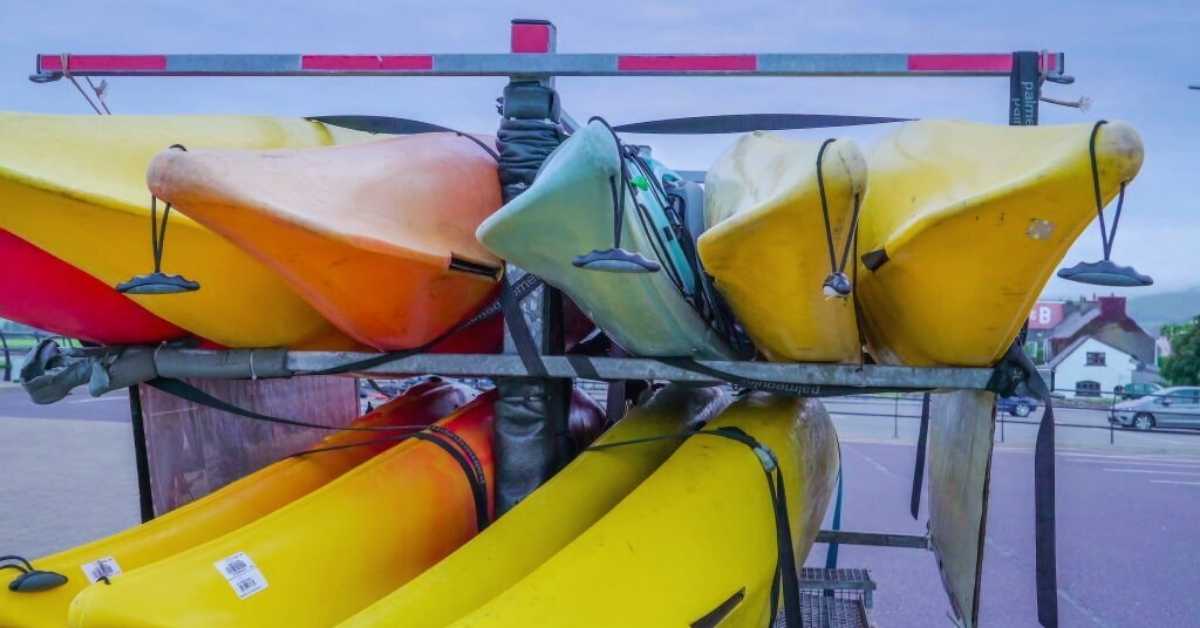Table of Contents
How To Build A Kayak Rack For Truck
If you have a compact car or limited space, transporting a kayak can be quite challenging. Fortunately, there’s a practical solution to this problem: building a kayak rack for your truck.
A kayak rack is a simple and effective way to securely transport your kayak. With the right tools and materials, you can easily construct a sturdy kayak rack for your truck.
In this guide, we’ll provide step-by-step instructions on Build A Kayak Rack For Truck.
Materials You’ll Need
These materials you’ll need to build a kayak rack for your truck.
- 2×4 lumber (pressure-treated recommended)
- 4×4 lumber posts
- Screws or nails
- Wood glue
- Tape measure
- Saw (circular saw or handsaw)
- Drill with drill bits
- Angle brackets (optional, for added stability)
- Sandpaper
Step 1: Measurements and Planning
Building a kayak rack for your vehicle involves precise measurements and planning for safety and functionality. First, measure your vehicle bed width to establish rack measurements.
To transport kayaks, measure their length, breadth, and truck bed height. These parameters define how many kayaks the rack can hold and their spacing. Make sure the rack can sustain the kayaks by choosing a solid wood or metal.
Sketch a design with support bars or cradles to secure the kayaks and any other features like tie-down straps or cushions.
After making a comprehensive blueprint, collect materials and equipment to build your unique kayak rack. You can create a sturdy kayak rack to carry your kayaks on truck travels with correct dimensions and preparation.
Step 2: Cutting the Lumber
Cutting the timber to length is crucial to building the rack. This activity requires a precise strategy and measurements before starting. Gather pressure-treated wood, a measuring tape, a pencil, and a saw.
Carefully measure and label the rack’s vertical supports, crossbars, and bracing. Double-check your measures for precision. For safety, use a saw to cut the timber according to your marks with steady hands and a solid grip.
Sandpaper any rough edges or splinters for a polished finish. By carefully cutting the timber, you may build a solid kayak rack that will securely carry your kayak to your favorite water areas.
Step 3: Assembling the Base
Making a solid kayak rack for a truck base is vital to create a stable storage option for your paddling outings.
Start by gathering timber, screws, and a drill. Cutting the timber to the right length ensures it fits firmly on the truck bed.
Next, evenly place the timber pieces horizontally on the truck bed. Drill pilot holes in the lumber to avoid splitting when screws are placed. Align the lumber with the pilot holes and screw it in.
Make sure the foundation is level and secure. A strong base for the kayak rack allows you to carry your boats safely and securely on your next expedition.
Step 4: Adding Crossbars
Adding truck crossbars is easy with a few tools and supplies. First, measure the truck bed width to calculate crossbar length.
Next, buy truck-compatible crossbars from a hardware shop or internet vendor. After getting the crossbars, put them equally on the truck bed and fasten them using screws or brackets.
The crossbars must be securely attached to avoid movement or damage during shipping. Kayak racks or straps may secure kayaks when the crossbars are installed.
Building a kayak rack for your pickup makes exploring new waterways and interesting paddling excursions easy.
Step 5: Installing the Rack
Installing a kayak rack on your car is an important task that requires careful attention to detail. The safety of both your vehicle and the kayak depends on securely fastening the rack.

To start, choose a suitable location on your car for the rack and attach it using the provided hardware.
It’s crucial to carefully follow the manufacturer’s instructions and seek professional assistance if needed.
After installing the rack, it’s essential to test its stability and make any necessary adjustments to ensure a safe and secure transportation of your kayak.
Step 6: Securing the Rack
To safely transport a kayak on a vehicle, it’s important to secure the rack properly. First, choose a rack that is compatible with both your vehicle and the size and weight of the kayak.
Install the rack following the manufacturer’s instructions and make sure it is stable before loading the kayak.
Place the kayak in the center of the rack and secure it tightly using straps or tie-downs. This will prevent any shifting during transportation.
It’s also essential to regularly check that the kayak remains securely fastened throughout your journey. Failing to properly secure both the rack and kayak can result in damage to your vehicle, kayak, and potentially other motorists on the road.
Step 7: Test Run
This experiment aims to assess the feasibility and safety of transporting a kayak on a car. The objective is to determine whether this method of transportation is practical and secure.
The methodology involves securely fastening the kayak onto the car using suitable equipment and evaluating its stability during transit.

The results from this trial will be analyzed to gauge the effectiveness of transporting kayaks in this manner, as well as identify any potential risks or hazards.
This study will provide valuable insights into enhancing the safety and efficiency of transporting kayaks on cars, which can inform future practices and policies.
Safety Considerations
Building a kayak rack for your pickup should prioritize safety. Gather pressure-treated timber, screws, and brackets before starting construction. Measure your vehicle bed accurately to ensure the kayak rack fits securely.
Make sure the rack can support your kayaks while constructing it. The construction needs crossbars and bracing to distribute weight equally.
Add cushioning or foam to the rack to protect your kayaks during transit. After building the rack, tie your kayaks using straps or bungee cords to prevent movement while driving.
Regularly examine and maintain the rack for stability and functioning. You may safely carry your kayaks and enjoy your trips by emphasizing safety throughout construction and taking safeguards.
Wrapping Up
In conclusion, safely transporting a kayak on a car requires careful consideration and adherence to safety guidelines.
It’s important to choose the right roof rack system and securely fasten the kayak to prevent accidents or damage to the vehicle.
Make sure the kayak doesn’t exceed the weight limit of the roof rack and is correctly positioned to maintain clear visibility for the driver.
By following these guidelines, you can transport your kayak on a car safely and enjoy an outdoor adventure without any hassle.
